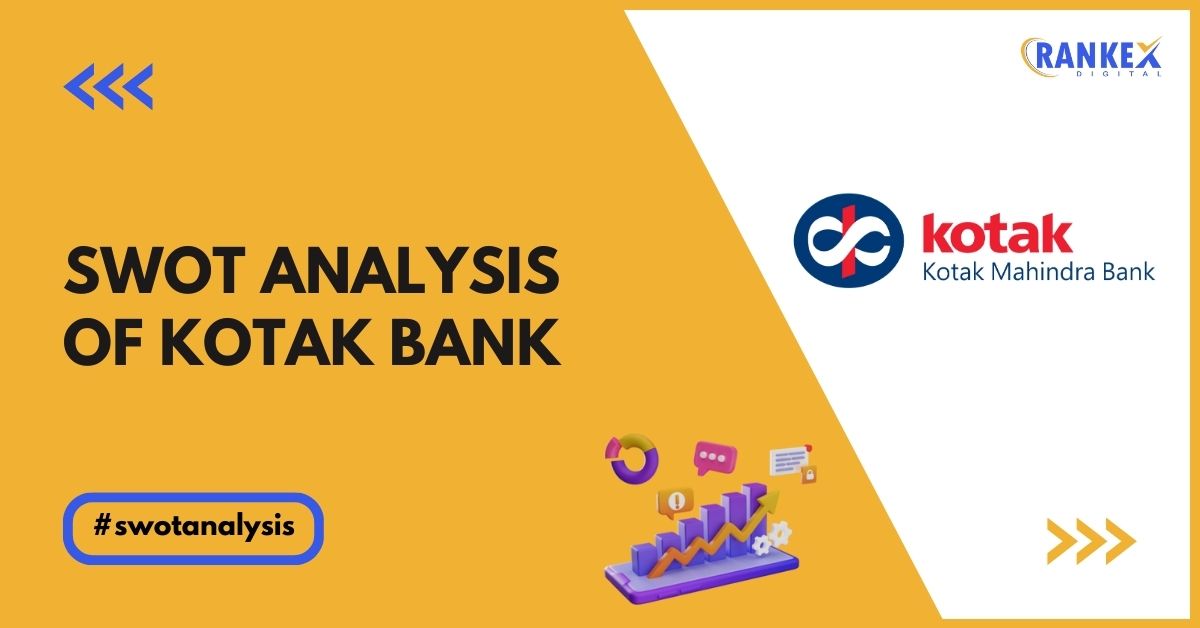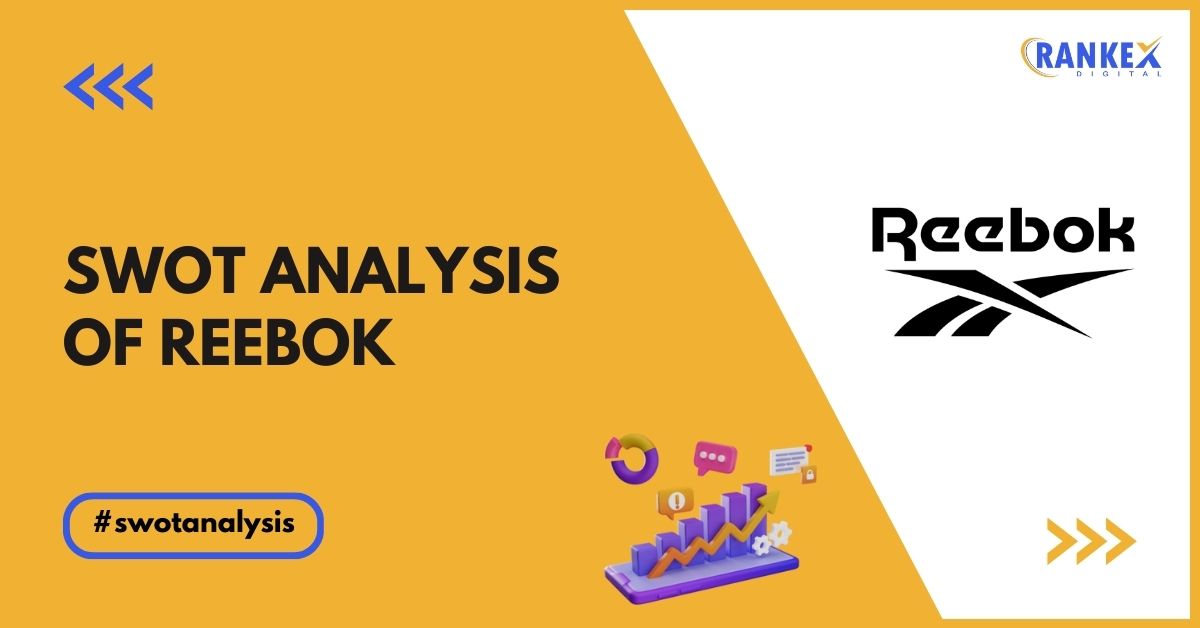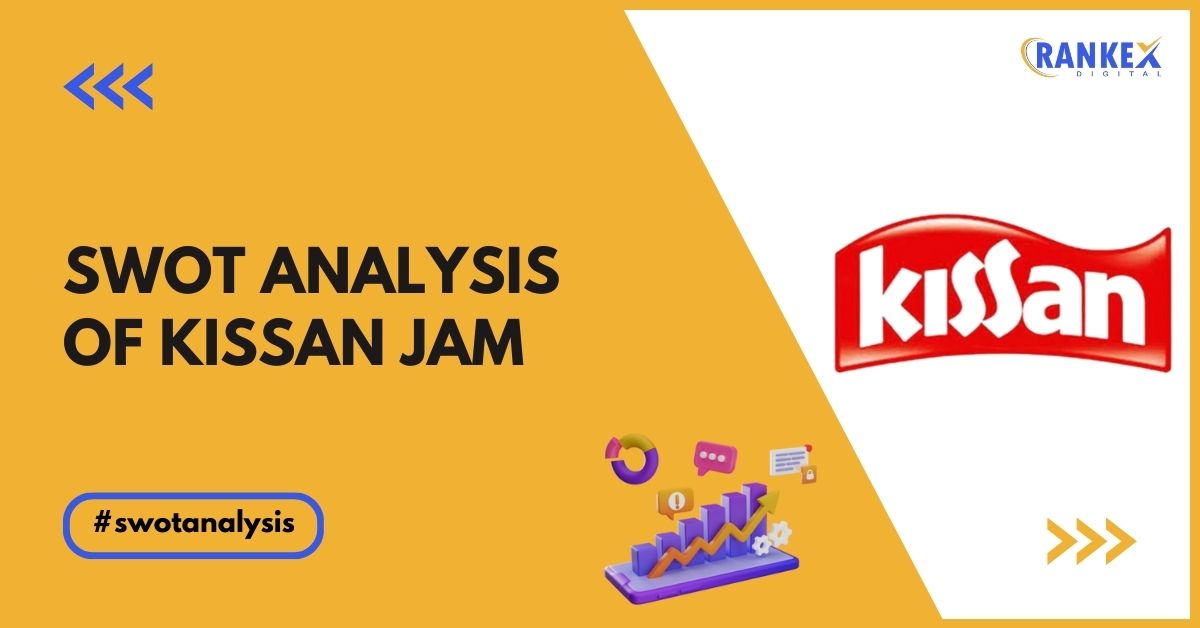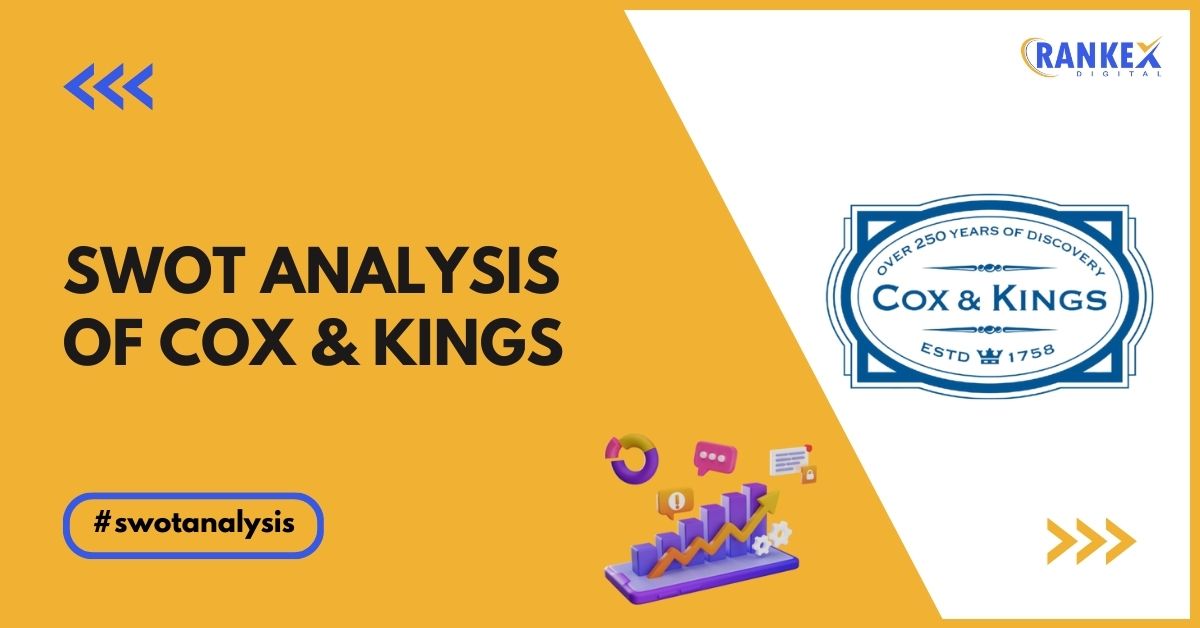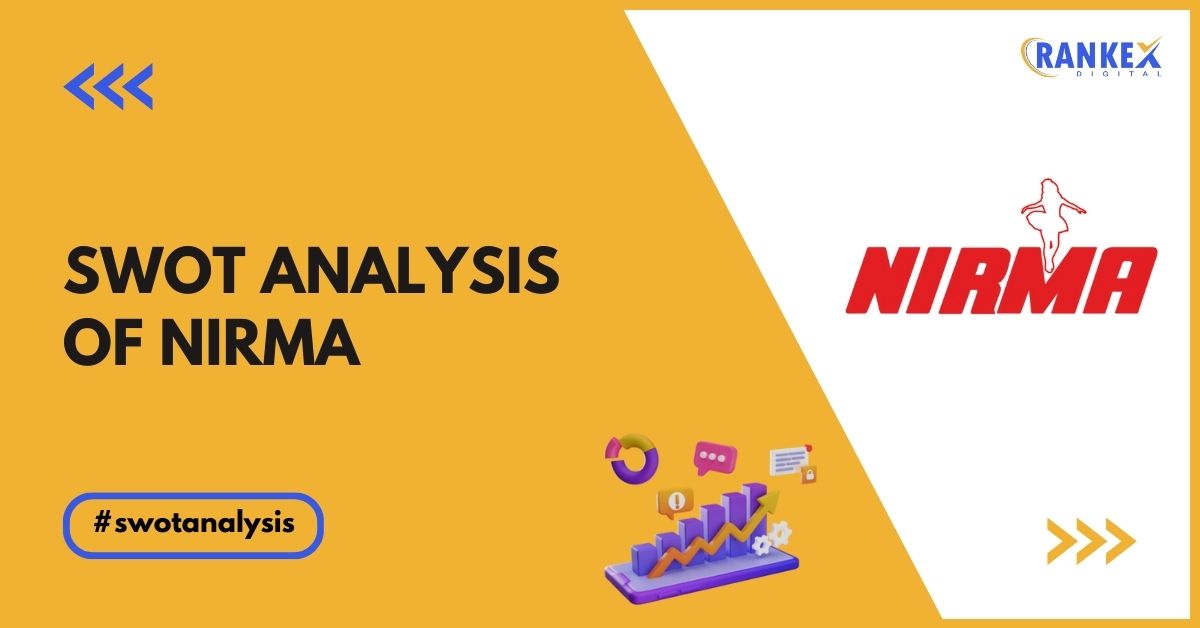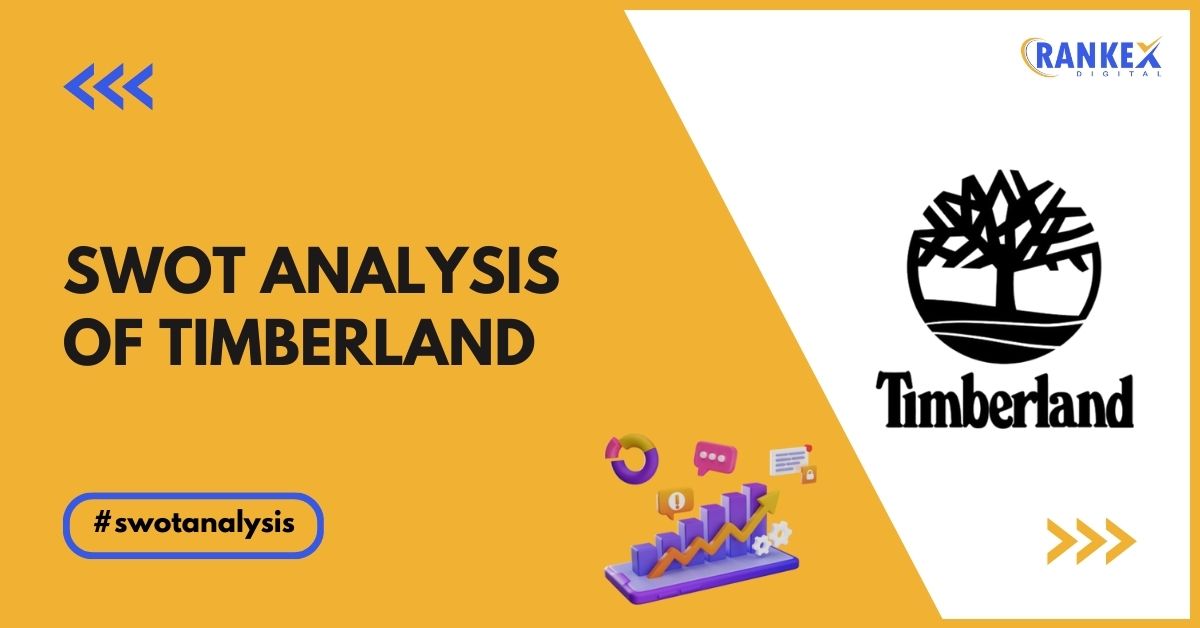Kotak Mahindra Bank is one of India’s leading private sector banks, renowned for its robust financial services and innovative banking solutions.
Understanding the strengths, weaknesses, opportunities, and threats (SWOT) of a company like Kotak Mahindra Bank is crucial for businesses, investors, and students alike.
SWOT analysis helps in identifying the internal and external factors that can impact the company’s performance and strategic planning.
The purpose of this article is to provide an in-depth SWOT analysis of Kotak Mahindra Bank, highlighting its current position in the market and potential future developments.
Table of Contents
Overview of Kotak Mahindra Bank
Kotak Mahindra Bank, founded in 1985 by Uday Kotak, started as a finance company before transitioning into a full-fledged bank in 2003.
Headquartered in Mumbai, it offers a wide range of financial services, including personal banking, corporate banking, investment banking, life insurance, and wealth management.
The bank is known for its customer-centric approach, technological advancements, and comprehensive financial solutions that cater to various segments of the market.
Quick Stats About Kotak Mahindra Bank
| Founder | Uday Kotak |
| Year Founded | 2003 |
| Origin | Mumbai, Maharashtra, India |
| No. of Employees | 70,000+ |
| CEO | Uday Kotak |
| Company Type | Public |
| Market Cap | $50 Billion |
| Annual Revenue | $8 Billion |
| Net Profit | $1.2 Billion |
Current News of Kotak Mahindra Bank
- Leadership Change: Uday Kotak stepped down as the Managing Director and CEO of Kotak Mahindra Bank, with Dipak Gupta taking over as the interim CEO.
- Digital Banking Expansion: The bank has been focusing on expanding its digital banking capabilities to enhance customer experience and operational efficiency.
- Sustainability Initiatives: Kotak Mahindra Bank has committed to sustainable banking practices, aiming to reduce its carbon footprint and promote green financing.
- Financial Performance: The bank reported a strong financial performance in the latest quarter, with significant growth in net profit and asset quality improvement.
SWOT Analysis of Kotak Mahindra Bank
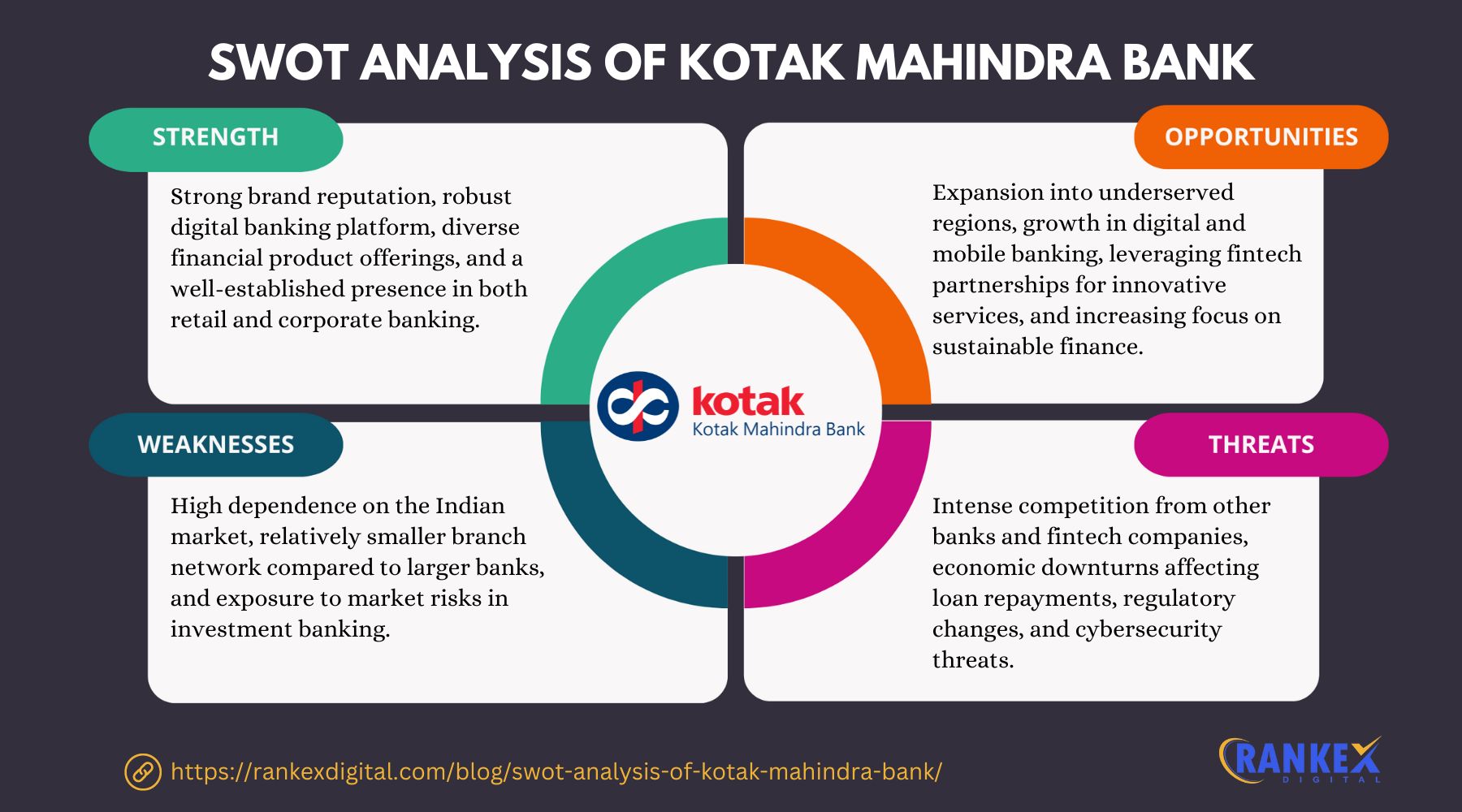
Strengths of Kotak Mahindra Bank
- Strong Brand Reputation: Kotak Mahindra Bank has built a solid reputation for reliability and trustworthiness in the financial sector, which attracts a large customer base.
- Diverse Product Portfolio: The bank offers a wide range of financial products and services, catering to various customer needs, from personal loans to investment banking.
- Technological Innovation: Kotak Mahindra Bank is at the forefront of digital banking, constantly innovating to provide seamless and secure banking experiences.
- Strong Financial Performance: The bank’s consistent financial growth and profitability demonstrate its stability and effective management.
- Robust Risk Management: Kotak Mahindra Bank has a comprehensive risk management framework that helps mitigate financial risks and maintain asset quality.
Weaknesses of Kotak Mahindra Bank
- High Operating Costs: The bank’s extensive network and technological investments result in high operating costs, which can impact profitability.
- Limited International Presence: Unlike some of its competitors, Kotak Mahindra Bank has a limited presence in international markets, which restricts its global reach.
- Dependence on Retail Banking: A significant portion of the bank’s revenue comes from retail banking, making it vulnerable to changes in consumer behavior and economic conditions.
- Regulatory Challenges: The banking sector is heavily regulated, and compliance with various regulations can be complex and costly for the bank.
- Intense Competition: The bank faces intense competition from other private and public sector banks, which can affect its market share and pricing strategies.
Opportunities for Kotak Mahindra Bank
- Digital Transformation: The increasing adoption of digital banking offers opportunities for Kotak Mahindra Bank to expand its customer base and enhance service delivery.
- Expansion into Rural Markets: By targeting underserved rural areas, the bank can tap into a new customer segment and drive growth.
- Strategic Partnerships: Collaborating with fintech companies and other financial institutions can help the bank offer innovative solutions and reach new markets.
- Sustainable Banking: Focusing on sustainable and green banking initiatives can attract environmentally conscious customers and investors.
- Wealth Management Services: With the growing affluent population in India, there is an opportunity to expand the bank’s wealth management services.
Threats to Kotak Mahindra Bank
- Economic Downturn: Economic instability and downturns can negatively impact the bank’s performance, leading to increased loan defaults and reduced profitability.
- Cybersecurity Risks: As digital banking grows, so do the risks of cyberattacks and data breaches, which can harm the bank’s reputation and customer trust.
- Regulatory Changes: Changes in banking regulations and policies can pose challenges for the bank, requiring adjustments in operations and compliance.
- Competition from Fintechs: The rise of fintech companies offering innovative financial solutions poses a threat to traditional banking models.
- Interest Rate Fluctuations: Changes in interest rates can affect the bank’s net interest margin and overall profitability.
Top Competitors of Kotak Mahindra Bank
- HDFC Bank
- ICICI Bank
- State Bank of India (SBI)
- Axis Bank
- Yes Bank
Conclusion
Kotak Mahindra Bank stands as a prominent player in India’s banking sector, known for its robust financial performance, customer-centric approach, and technological innovation.
The SWOT analysis reveals the bank’s strengths, such as its strong brand reputation and diverse product portfolio, while also highlighting areas for improvement, like high operating costs and limited international presence.
Opportunities for growth lie in digital transformation, rural market expansion, and strategic partnerships. However, the bank must navigate threats such as economic downturns, cybersecurity risks, and intense competition from fintechs.
Overall, Kotak Mahindra Bank’s ability to leverage its strengths and capitalize on opportunities while addressing weaknesses and mitigating threats will determine its future success in the dynamic financial landscape.
By staying agile and innovative, the bank can continue to thrive and contribute to India’s economic growth.

